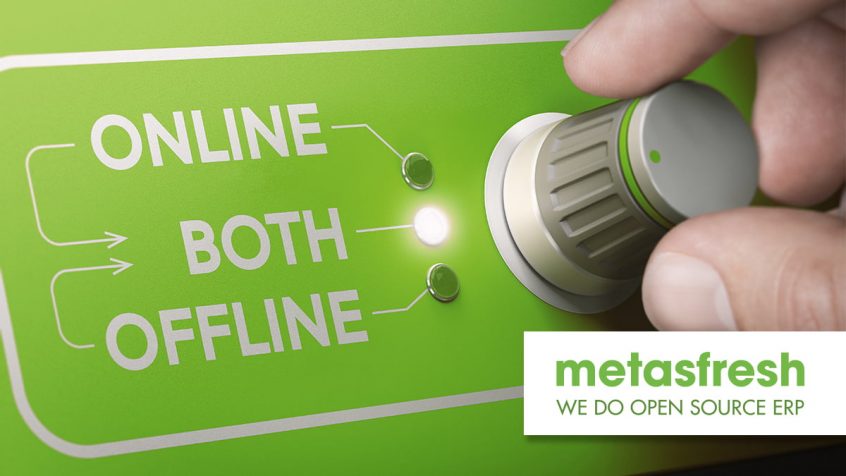Share this Post
Why Seamless Commerce is the New Norm
The past two years of the pandemic have caused a sea change in consumer attitudes to online interactions and digital transactions. With people around the globe confined to their homes or immediate environs for extended periods, searching for commodities and services online, paying for them digitally, and then arranging for contactless or minimal contact methods of delivery has become the norm. To this extent, COVID-19 has become a tipping point for ecommerce — the point when online shopping for “most things”, not just “some things”, becomes the default format for the mass market, causing long-lasting, important change.
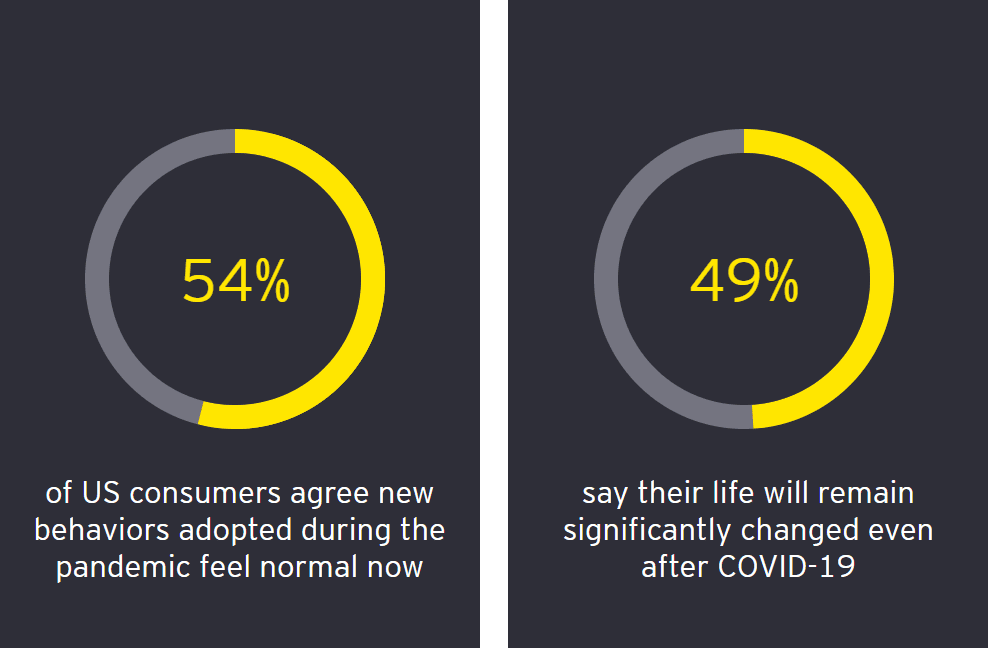
Sentiment from more than 1,000 US consumers (as of October 2021). —Source: ey.com
While digital technologies and processes for commerce provide the underlying mechanics, we remain in a buyer’s market — and the onus on vendors and retailers is still to capture and retain the loyalty of the consumer. These consumers now engage with brands through a number of channels or touch points, such as mobile apps, web portals, marketplaces, physical depots, and social media. Regardless of how they interact with the seller, the experience they want and expect must be smooth, seamless, and consistent. This demand puts pressure on both producers and vendors to successfully integrate and streamline their manufacturing, logistics, transaction processing, supply chain, delivery, and other critical processes.
Enterprise Resource Planning (ERP) systems have become the central facilitator for the planning, control, and execution of all business processes, with the ability to centralise all business-relevant data in one readily accessible system. Modern ERP systems like metasfresh ERP provide a flexible foundation upon which organisations can integrate more and more cutting-edge technologies to advance their digital maturity and drive transformation.
Meeting these challenges requires organisations to not only get their ecommerce strategies right, but also to integrate these strategies with the larger ecosystem of production and business processes, inventory management, finance, and supply chain that come within the remit of Enterprise Resource Planning or ERP.
Successful Ecommerce Strategies for Today’s Economy
Information is as critical a part of the digital economy for retailers as having a good selection of products, effective tactics for creating awareness about them, mechanisms enabling customers to buy and take delivery of them, and a reliable support and query network, should things go wrong. Successful strategies for ecommerce must therefore take all of these factors into account, and include the following.
Understand the Customer Journey
Identify your target consumers and understand how they behave. A great way to start is by creating buyer personas — semi-fictionalised constructs of individuals in each target demographic, complete with names, income levels, personality traits, etc. Here’s an example:

Example of a buyer persona. —Source: woocommerce.com
These models help in understanding what your customers want, how they seek out products and engage with brands, and the various channels that they use along the path to purchase. Knowing this enables you to identify areas where technology could be employed to eliminate friction and optimise their experience.
Optimise for Mobile
Creating mobile options for consumers is no longer just a nice idea. Particularly in emerging markets, the first point of engagement that consumers have with brands is via their smartphones or internet-connected mobile devices. Studies show that 53% of mobile visits are abandoned if pages take longer than 3 seconds to load — even if their overall opinion of the business or brand is positive. So having an ecommerce website that is optimised for mobile is now a necessity.
Use Data and Analytics to Your Advantage
Collect data using privacy compliant means to chart customer behaviour across your online presence. Analysing this information can fuel strategies for product development and ad placement, and provide the means to create personalised customer experiences and more effective customer service delivery. This in turn can help in streamlining your ecommerce processes, while promoting brand loyalty.
Emphasise and Promote Your Stance on Data Privacy and Security
While often willing to provide a certain amount of personal information to get personalised services and offers, consumers are equally wary of the amount of data that brands collect from them, and how it is distributed or used. Indeed, research has shown that only 34% of CEOs believe that customers trust them with their data.
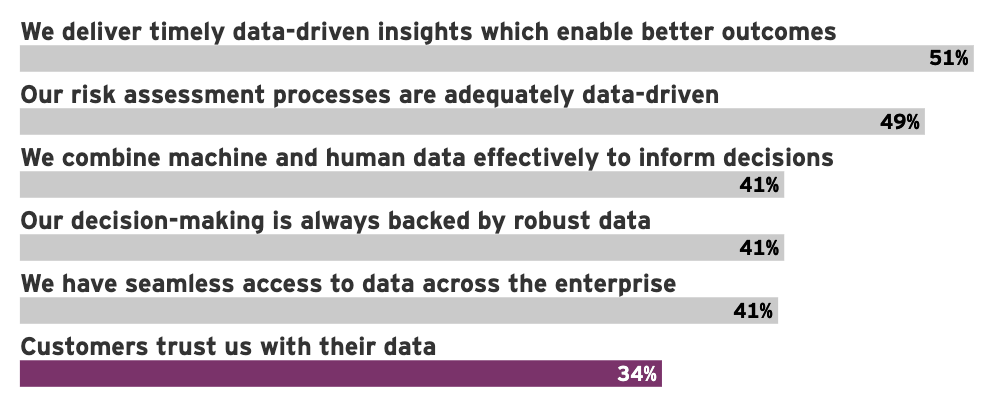
CEO data trust gap in numbers. —Source: martechalliance.com
Being transparent about your data collection policies helps in allaying these fears and can also bolster your regulatory compliance status.
Taking a strong stance on cybersecurity also helps in gaining the confidence of consumers. You can, for example, promote trust and loyalty by prominently displaying “trust marks” detailing the security measures you take on your site and relevant industry standards that you meet.
Deliver an Omni-channel Experience to Your Customers
In this sense, omni-channel means providing the means for customers to start and complete their purchasing journeys across different channels, without having to start again from the beginning if they switch from one channel to another. This can include mechanisms like enabling online shoppers to view inventory that’s available in your physical store, and to reserve items or purchase them directly from this view.
Be Willing to Adopt New Technologies
Technologies like Virtual Reality (VR) and Augmented Reality (AR) are already bridging the gap between in-store and digital shopping, with applications like “virtual try-on” that can demonstrate how the customer would look in certain shades of makeup or clothing. Other technologies making a mark at the consumer level include voice search and image search.
For the enterprise, technologies powered by Artificial Intelligence (AI) and Machine Learning (ML) enable brands to perform predictive analytics, automate business processes, and deliver a more personalised experience to their customers.
Optimise the Checkout Experience
Additional fees, account creation, and excessive delays in completing purchases and arranging for delivery can nullify sales, leading to cart abandonment and customer churn, as disgruntled buyers leave for sites with a more efficient checkout process.
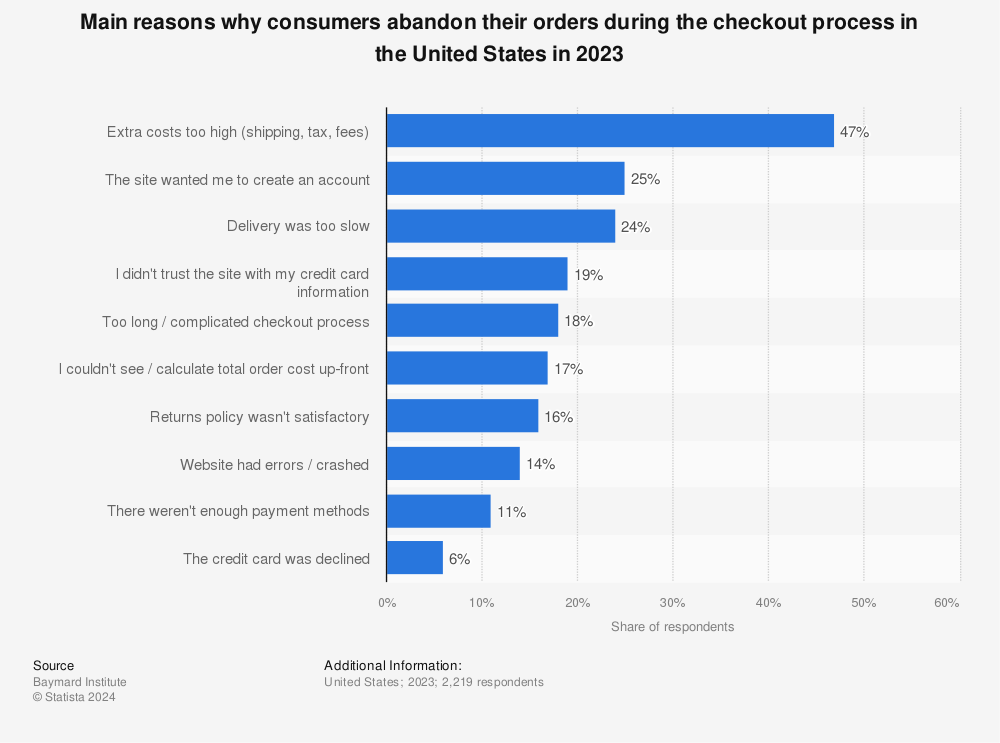
Main reasons why consumers in the United States abandoned their orders during the checkout process in 2021. —Source: statista.com
Minimising the number of steps required, automatically checking for errors, and providing the payment options that your customers actually prefer are critical to streamlining and optimising this critical phase of the buyer’s journey.
Integrating ERP and Ecommerce for a Seamless Ordering Experience
Inaccurate handling of orders and deliveries can also lead to abandoned purchases, emphasising the need to also optimise the ordering experience. Integrating ecommerce operations with Enterprise Resource Planning systems like metasfresh ERP can achieve this, as well as assisting in inventory, logistics, and budget management. This is especially important for Business to Business (B2B) ecommerce operations, where customers often rely on bulk orders to fulfil their operational requirements.
ERP and ecommerce integration ensures that, during the ordering phase, customer data is relayed automatically to both back- and front-end systems. Such integration between software systems eliminates the risk of errors due to manual data management. It also reassures the enterprise that the customer’s shipping details are accurate, while enabling the business to determine which of its warehouse locations is most appropriate for fulfilling the order.
Besides minimising the chance of errors due to manual management, integration also makes real-time data available to the enterprise. For example, inventory data in the ERP system also factors in the quantities of goods sold or ordered on the ecommerce site on a real-time or near real-time basis. This empowers the organisation’s procurement division to make appropriate buying decisions that keep key commodities in stock at all times.
Having ecommerce data available to a system like metasfresh ERP also makes it easier for the enterprise to evaluate which products are most in demand to given demographics. This can assist in the creation of more effective marketing strategies, and for budgetary planning. And by eliminating the need to hire labour to manually update items, prices, or images on the ecommerce site, the business saves money on operational expenditure.
Integration between ERP and ecommerce platforms must typically take place at two levels:
1. Batch Integration
Depending on the business requirements and the volume of information involved, data is synchronised via batch integration at scheduled intervals. The process assembles data from one software system that matches conditions laid out in the other system and exports the information in batches.
Note that with the scheduled interval between batch transfers, customers placing orders online face the risk of ordering items that aren’t currently in inventory, or that may incur delays in delivery. So, this method does not favour retailers who have to deal with high-volume orders online, or transactions requiring a rapid turnover.
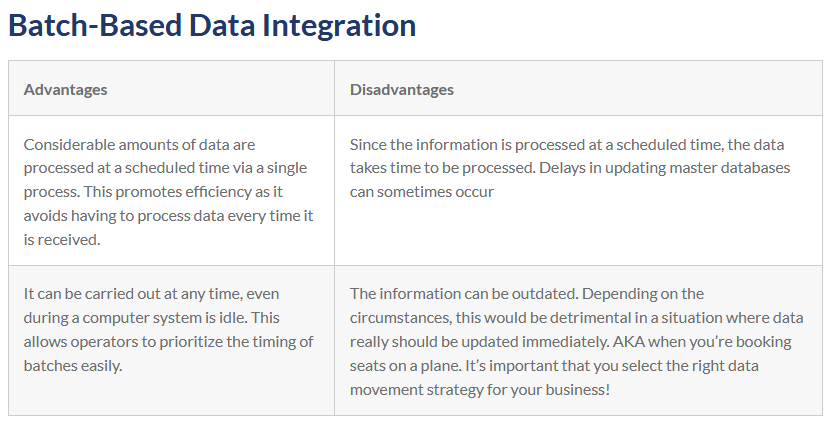
Advantages and Disadvantages of Batch-Based Data Integration. —Source: vlomni.com
2. Real-Time Integration
Here, data from each transaction is communicated between systems in real time, and with no human intervention. In a typical scenario the ERP system continuously monitors the web so that when a customer places an order online, ERP flags the transaction and instantly pulls its relevant data from the front end into the back end. Software automatically creates a sales order and updates the inventory, pushing this information to the front-end ecommerce system. At the same time, inventory records in the warehouse update to reflect these changes.
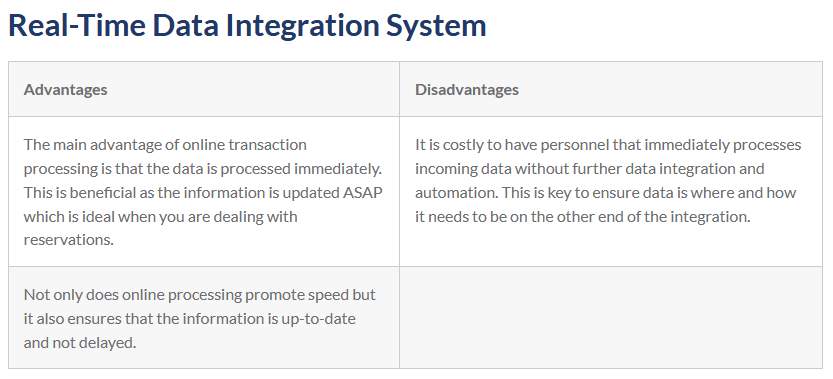
Advantages and Disadvantages of Real-Time Data Integration. —Source: vlomni.com
Creating Seamless B2B Commerce Experiences With CPQ, CRM, & ERP
For Business to Business (B2B) transactions, order volumes are typically large, and keeping track of the amounts and prices of commodities can be a significant challenge.
A Configure Price Quote (CPQ) system executes and acts as a repository for the business rules needed to validate a bill of material (BOM). It usually provides a user-friendly interface for configuring the options needed to execute these rules effectively and accurately.
A Customer Relationship Management (CRM) system provides a database for holding information on customer preferences, past transactions, behaviours, loyalty to the brand, and related data.
For B2B commerce, the ability of a CPQ system to effectively execute its rules depends on the quality and availability of information relating to products, customers, and inventory. So, integrating CPQ, CRM, and ERP systems provides benefits all round.
For example, information from the CRM made available to the CPQ can assist in the formulation of rules during the quote and product configuration processes, including pricing segmentation. As each quote is processed in the Configure Price Quote system, information can be shared with the CRM to reflect changes in the marketing opportunity that the customer represents.
ERP comes into the picture for its role in monitoring production, providing supply chain information, tracking financial data, and tracking the availability of products. A system like metasfresh ERP can provide inventory visibility for the CPQ. This enables consumers to know if there may be a delay in processing their order, or if any of the options they have specified for their order are currently out of stock. Integration also allows workflow and approval processes defined in the CPQ to drive the engineering, planning, and scheduling processes in the ERP system.
Taking the Next Step
If you’re looking to integrate your ecommerce platform with Enterprise Resource Planning, you’ll need a system that’s up to the task.
metasfresh ERP is designed to drive efficiencies throughout your organisation. Automation plays a key part in this. With auto data loading, autocomplete and auto-prompt functionality — combined with a super-intuitive interface that can be accessed on any device — metasfresh ERP reduces the amount of time your employees spend on manual tasks and streamlines the flow of key information between departments.
Since 2006, we have been developing our metasfresh ERP software non-stop with open source components and under the open source licenses GPLv2 and GPLv3. Our mission is to enable each and every company to access a powerful ERP system that supports digital transformation and fuels corporate growth. Get in touch today for more information and insights.
Share this Post



